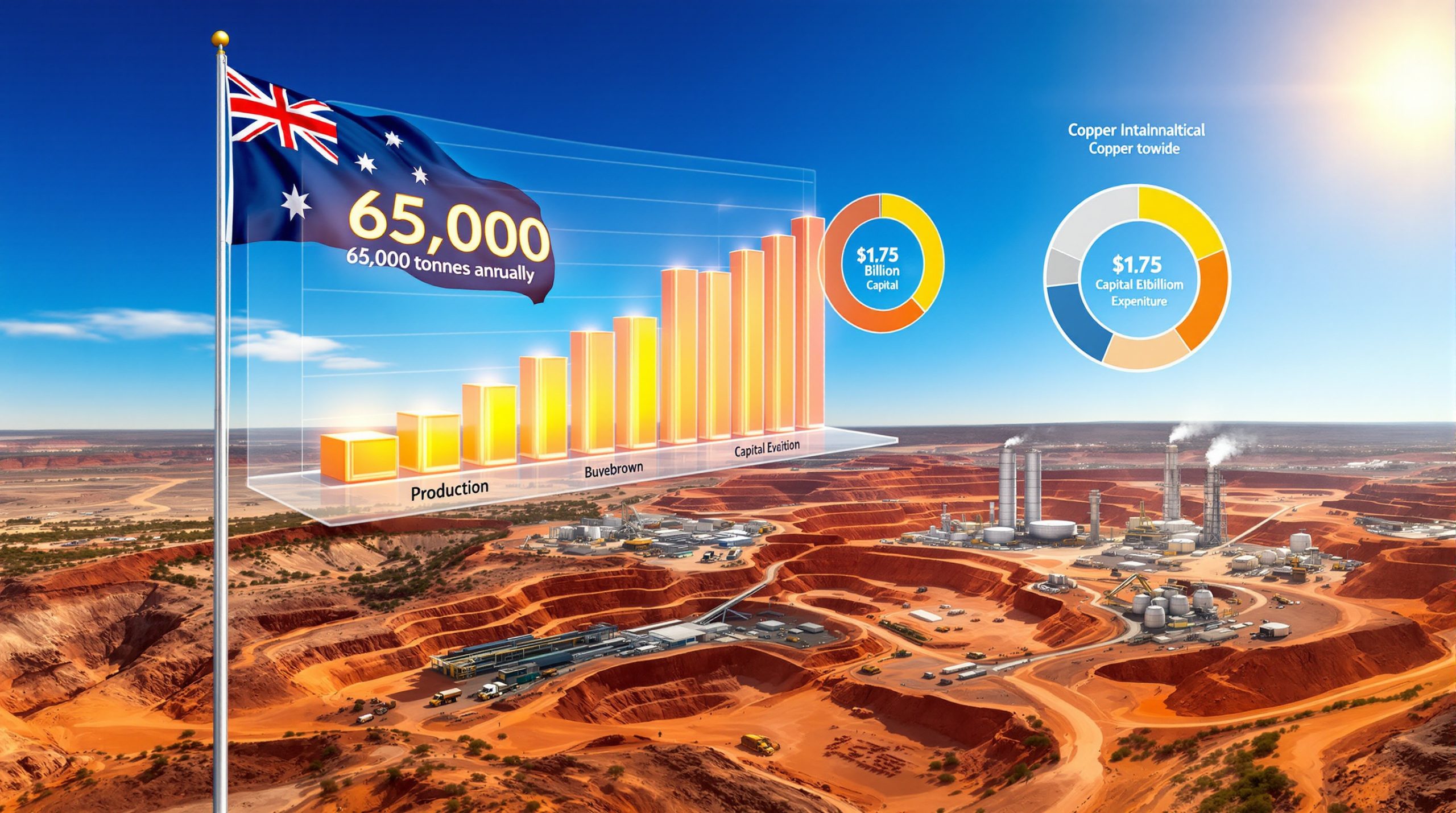What Is the Rare Earths Tariff Pause and Why Does It Matter?
Recent developments in US-China trade negotiations have produced a significant breakthrough: discussions between top economic officials from both nations have outlined a framework that could temporarily suspend escalating tariffs and export restrictions on rare earth elements. This potential rare earths tariff pause represents a critical shift in how the world's two largest economies approach their strategic competition over materials essential to modern technology infrastructure.
According to recent negotiations held on the sidelines of the ASEAN Summit in Kuala Lumpur, US Treasury Secretary Scott Bessent indicated that discussions had successfully eliminated the immediate threat of 100% tariffs on Chinese imports that were scheduled to begin November 1, 2025. Additionally, expectations emerged that China would delay implementation of its rare earth minerals and magnets licensing regime by approximately twelve months while policies undergo reconsideration.
Key Market Statistics and Implications:
- China maintains control over approximately 90% of global rare earth processing capacity
- Threatened US tariff rates of 100% on Chinese imports have been postponed indefinitely
- Chinese export licensing implementation delayed by one year pending policy review
- Global rare earth market operations valued at multiple billions annually face stabilization
The significance of this development extends beyond bilateral trade relations. Rare earth elements serve as critical components in manufacturing processes for smartphones, electric vehicle batteries, wind turbine magnets, military defense systems, and advanced semiconductor technologies. Consequently, any disruption to these supply chains creates cascading effects throughout global technology and clean energy sectors.
How Did US-China Tensions Reach This Critical Point?
The escalation of rare earths-related trade tensions represents the culmination of broader strategic competition between the United States and China over critical mineral supply chains and technological dominance. This confrontation intensified throughout 2024 and early 2025, driven by multiple converging factors that transformed rare earths from commercial commodities into instruments of geopolitical leverage.
Our comprehensive US‑China trade war analysis reveals how previous rounds of trade disputes established a pattern of retaliatory measures, with tariff rates reaching substantial levels across various product categories. Technology export controls expanded significantly to include semiconductors, advanced manufacturing equipment, and critical defense-related components.
The Escalation Timeline
Trade War Amplification:
Both nations implemented increasingly restrictive licensing requirements that created uncertainty for manufacturers and suppliers dependent on cross-border trade flows. Furthermore, the tariffs' market impact became evident as supply chain vulnerabilities that had been building for years suddenly became immediate national security concerns requiring urgent policy responses.
Strategic Resource Weaponisation:
China expanded its export control framework to include rare earth magnets and processing materials, recognising the strategic leverage these restrictions could provide. In addition, the United States considered comprehensive blocks on software-powered exports to China, encompassing everything from consumer electronics to advanced jet engine components.
Historical precedents demonstrate the potential for rare earth supply disruptions to create significant economic and technological consequences. The 2010 restriction of Chinese rare earth exports during territorial disputes with Japan caused global supply shortages and price spikes that reverberated throughout high-technology manufacturing sectors for months.
What Are the Specific Terms of This Tariff Pause Framework?
The preliminary agreement outlined by negotiators represents a carefully balanced approach to de-escalating immediate tensions while addressing underlying concerns about supply chain security and trade balance issues. However, it's crucial to note that these discussions produced a framework for consideration rather than finalised commitments.
US Commitments and Concessions
Tariff Suspension Details:
- Postponement of 100% tariff implementation originally scheduled for November 1, 2025
- Extension of existing trade truce arrangements beyond the November 10 expiration deadline
- Selective easing of certain technology export restrictions in specific categories
- Maintenance of dialogue channels for addressing ongoing trade disputes
Chinese Commitments and Adjustments
Export Control Modifications:
- One-year delay in implementing rare earth licensing regime while policies undergo review
- Commitment to resume substantial purchases of US agricultural products, particularly soybeans
- Continuation of existing rare earth supply agreements with American importers
- Initiation of internal policy review processes for export control mechanisms
Li Chenggang, China's lead trade negotiator, characterised the talks as reaching preliminary consensus while emphasising that both sides must complete respective internal approval processes. The Chinese position stressed firmness in defending national interests whilst acknowledging the constructive nature of the consultations.
Which Industries Will Benefit Most From This Development?
The potential stabilisation of rare earth supply chains would provide immediate relief to multiple industrial sectors that have faced increasing uncertainty and cost pressures due to escalating trade tensions. The breadth of industries affected demonstrates the critical importance of these materials in modern manufacturing processes.
Technology Manufacturing Sectors
Electronics and Consumer Devices:
- Smartphone manufacturers gain enhanced supply chain predictability for critical components
- Computer hardware production costs stabilised through reduced input price volatility
- Gaming console and consumer electronics pricing pressure alleviated
- Display technology manufacturing secured through phosphor material access
Automotive Industry Transformation:
- Electric vehicle battery production chains maintain access to essential cathode materials
- Permanent magnet motor manufacturing for hybrid and electric vehicles continues uninterrupted
- Charging infrastructure development projects secured through component availability
- Supply chain planning horizons extended beyond immediate crisis management
Clean Energy Infrastructure Development
Wind Power Generation:
Modern wind turbines rely heavily on permanent magnet generators that require substantial quantities of neodymium and dysprosium. A typical 2-3 MW wind turbine incorporates approximately 200-600 kilograms of rare earth permanent magnets, making supply chain stability crucial for renewable energy project development.
Key Benefits for Wind Energy:
- Offshore wind project timelines preserved through component availability assurance
- Grid-scale energy storage development maintained via magnetic material access
- Manufacturing cost predictability improved for turbine producers and project developers
- Long-term power purchase agreement negotiations stabilised through reduced input cost uncertainty
Defence and Advanced Technology Applications
Military and aerospace applications represent some of the most critical uses for rare earth elements, particularly heavy rare earths like dysprosium and terbium that enable high-temperature magnetic performance in sophisticated systems.
Critical Applications:
- Missile guidance systems requiring precision magnetic components
- Military communications equipment dependent on rare earth phosphors
- Advanced radar systems incorporating specialised magnetic materials
- Satellite technology utilising rare earth-enhanced electronic components
What Are the Broader Economic Implications?
The potential rare earths tariff pause creates ripple effects throughout global financial markets and supply chain networks, influencing investment decisions, pricing strategies, and long-term planning processes across multiple economic sectors. Moreover, understanding the investment market effects becomes crucial for stakeholders evaluating their strategic positions.
Global Supply Chain Stabilisation
| Sector | Impact Level | Primary Benefits |
|---|---|---|
| Electronics Manufacturing | Very High | Price stability, production planning certainty, inventory optimisation |
| Automotive Industry | Critical | EV transition continuity, battery cost control, supply security |
| Defence Technology | Strategic | Military equipment production security, procurement stability |
| Renewable Energy | High | Infrastructure project viability, cost predictability |
| Industrial Manufacturing | Moderate | Magnetic component availability, processing equipment access |
Market Response and Investment Implications
Financial markets typically respond positively to reduced geopolitical tensions and improved supply chain visibility. The framework agreement creates several investment implications across different asset classes and geographic regions.
Equity Market Considerations:
Technology sector equities benefit from reduced input cost uncertainty and improved production planning visibility. However, rare earth mining companies may face valuation pressure as supply chain premiums diminish and alternative source development becomes less urgent.
Clean energy infrastructure investments gain stability through more predictable component costs and project timeline certainty. Manufacturing sector indices respond positively to supply chain normalisation and reduced operational complexity.
How Might This Framework Affect Global Rare Earth Pricing?
Rare earth pricing mechanisms reflect complex interactions between supply concentration, demand variability, processing bottlenecks, and geopolitical risk premiums. The potential rare earths tariff pause would influence these dynamics across multiple timeframes and market segments.
Short-Term Price Dynamics
Immediate Market Corrections:
- Reduction of speculative risk premiums embedded in futures contract pricing
- Inventory destocking by manufacturers who had accumulated strategic stockpiles
- Normalised contract negotiations replacing crisis-driven procurement strategies
- Decreased price volatility across most rare earth element categories
Supply-Demand Rebalancing:
Manufacturing demand patterns would return to fundamentally-driven levels rather than panic buying or strategic stockpiling behaviours. Contract pricing negotiations could resume normal commercial cycles instead of emergency procurement protocols.
Long-Term Structural Considerations
Market Concentration Persistence:
While immediate price pressures may subside, the fundamental issue of Chinese processing dominance remains unchanged. This concentration creates ongoing vulnerability to future supply disruptions regardless of current political agreements.
Alternative Supply Development:
Reduced immediate supply chain stress may slow investment in alternative rare earth processing capabilities outside China. However, strategic considerations suggest continued government support for supply chain diversification initiatives.
Price Discovery Mechanisms:
The limited number of processing facilities and concentrated supplier base means price discovery remains constrained by structural market characteristics rather than competitive dynamics.
What Challenges and Risks Remain Despite This Framework?
While the preliminary agreement provides immediate relief from escalating trade tensions, fundamental structural issues and geopolitical competition factors continue to create ongoing risks for global rare earth supply chains.
Implementation and Approval Uncertainties
Political Approval Processes:
Both nations require internal governmental approval mechanisms before any framework becomes operational policy. The preliminary nature of current agreements means substantial implementation risks remain until final political endorsement occurs.
The critical minerals policy landscape continues evolving, with changing political priorities or external events potentially altering negotiation dynamics before final implementation.
Timeline Considerations:
The framework requires approval at the highest political levels, with meetings planned between Presidents Trump and Xi Jinping. However, changing political priorities or external events could alter negotiation dynamics before final implementation.
Structural Supply Chain Vulnerabilities
Processing Capacity Concentration:
China's dominance in rare earth processing operations continues regardless of tariff arrangements. This concentration represents a fundamental vulnerability that temporary trade agreements cannot address.
Critical vs. Non-Critical Applications:
Military and defence applications require the highest-grade rare earth materials, often processed using specialised techniques concentrated in Chinese facilities. Alternative supply sources may not meet quality requirements for these strategic applications.
Technology Transfer Restrictions:
Processing rare earth elements requires sophisticated technical knowledge and environmental management systems. Technology transfer restrictions may limit the development of alternative processing capabilities even when raw materials are available elsewhere.
How Are Other Countries Responding to This Development?
The US-China rare earths framework creates strategic implications for other nations seeking to develop alternative supply chains or reduce their own dependence on Chinese processing capabilities.
European Union Strategic Positioning
The European Union continues implementing its Critical Raw Materials Act, which aims to reduce dependence on single-source suppliers for strategic materials. European policymakers view supply chain diversification as essential for long-term economic security regardless of temporary bilateral agreements between the United States and China.
EU Strategic Initiatives:
- Investment in European rare earth processing facility development
- Partnership agreements with alternative supplier nations including Australia and African producers
- Research funding for recycling technologies and material substitution programmes
- Strategic reserve accumulation for critical materials including rare earths
Australian Resource Sector Response
Australia represents one of the few countries with both significant rare earth deposits and the technical capability to develop advanced processing facilities. Australian mining companies are reassessing project timelines and investment priorities in light of reduced immediate supply chain pressure.
Key Australian Developments:
- Lynas Rare Earths continues expanding processing capabilities in Malaysia and potentially Australia
- Government funding for rare earth processing technology development
- Export partnership negotiations with allied nations seeking supply diversification
- Integration of rare earth development with broader critical minerals strategies
According to the Financial Times, "Australian companies are viewing this development as providing breathing room while maintaining long-term diversification strategies".
Emerging Market Opportunities and Challenges
African Rare Earth Projects:
Several African nations possess significant rare earth deposits that could contribute to global supply diversification. However, these projects require substantial infrastructure investment and technical expertise development.
Countries including Rwanda, Tanzania, and Kenya have identified rare earth potential within their mineral resource portfolios. Development of these resources depends on international investment and technology transfer arrangements.
Southeast Asian Processing Development:
Malaysia currently hosts rare earth processing operations through partnerships with Australian companies. Other Southeast Asian nations are exploring opportunities to develop processing capabilities that could serve regional and global markets.
Latin American Resource Development:
Brazil possesses rare earth deposits that could contribute to Western Hemisphere supply security. Mexico and other Latin American countries are evaluating their rare earth potential as part of broader critical minerals strategies.
What Should Investors and Businesses Expect Moving Forward?
The preliminary framework agreement creates both opportunities and challenges for investors and businesses involved in rare earth supply chains, technology manufacturing, and clean energy development. Furthermore, the energy transition implications remain significant for long-term planning.
Near-Term Strategic Considerations
Supply Chain Planning Adjustments:
- Reassessment of strategic stockpile requirements and inventory management policies
- Renegotiation opportunities for long-term supply contracts with improved terms
- Evaluation of previously suspended projects and investment decisions
- Integration of geopolitical risk management into operational planning
Investment Implications Across Sectors:
Technology manufacturing companies may experience improved profit margins through stabilised input costs and reduced supply chain complexity. However, this stability comes with continued dependence on concentrated supply sources.
Clean energy project developers gain enhanced economic predictability for wind and solar installations requiring rare earth components. Project financing becomes more accessible with reduced input cost volatility.
Long-Term Strategic Positioning
Diversification Imperatives:
Despite immediate supply chain relief, the fundamental concentration of processing capabilities means long-term diversification strategies remain essential for supply security. Companies and nations investing in alternative supply sources maintain strategic advantages regardless of current trade agreements.
Technology Development Priorities:
Investment in recycling technologies, material substitution research, and alternative processing methods continues to provide long-term value despite short-term supply stability. These technologies create options for future supply chain flexibility.
Partnership and Alliance Formation:
Strategic partnerships between allied nations for critical mineral supply chains accelerate as governments recognise the importance of supply security for economic and national security objectives.
What Are the Key Risks to Monitor?
Political Volatility:
Changes in political leadership or priorities in either nation could derail the framework before final implementation. Additionally, external geopolitical events might create new tensions that override current agreements.
Market Manipulation Concerns:
The concentrated nature of rare earth processing means individual companies or state actors retain significant market influence regardless of trade agreements. Price manipulation remains possible through production adjustments or strategic stockpiling.
Technology Competition Escalation:
Broader technological competition between superpowers continues intensifying, potentially creating new friction points that could undermine rare earth cooperation arrangements.
Conclusion: Assessing the Framework's Long-Term Significance
The rare earths tariff pause framework represents a significant de-escalation in US-China trade tensions, providing immediate relief to global supply chains and manufacturing sectors dependent on these critical materials. However, the temporary nature of this arrangement and the preliminary status of current agreements highlight the ongoing volatility inherent in great power competition over strategic resources.
Recent reporting from Reuters emphasises that "while immediate tensions have eased, the fundamental structural competition over critical minerals continues to shape bilateral relations".
While businesses and investors can benefit from immediate price stability and supply security improvements, the fundamental structural issues remain largely unaddressed. China's processing dominance, strategic competition between superpowers, and the weaponisation of critical resources continue as underlying factors that could resurface under different political or economic conditions.
The success of this framework will ultimately depend on both nations' ability to establish mutually beneficial arrangements that balance economic interdependence with national security imperatives. This balance becomes increasingly challenging as technological competition intensifies and strategic applications for rare earth elements expand across military, energy, and advanced manufacturing sectors.
Critical Considerations for Stakeholders:
Businesses should treat this framework as providing operational breathing room rather than resolving fundamental supply chain vulnerabilities. Continued investment in diversification strategies, alternative material research, and supply chain resilience remains prudent regardless of current political agreements.
Investors must balance immediate opportunities from stabilised supply chains against long-term risks from concentrated processing capabilities and ongoing geopolitical competition. The framework creates tactical advantages while strategic challenges persist.
Policymakers in other nations should view this development as reinforcing the importance of supply chain independence and alternative source development rather than reducing the urgency of these initiatives. The rare earths tariff pause provides time for strategic planning, not a permanent solution to supply security challenges.
Disclaimer: This analysis is based on preliminary framework discussions that require final political approval. Actual implementation may differ from current expectations, and geopolitical developments could alter the terms or viability of any final agreement. Market conditions and supply chain dynamics remain subject to ongoing political and economic developments beyond the scope of current negotiations.
Looking to Capitalise on Rare Earth Investment Opportunities?
Discovery Alert's proprietary Discovery IQ model delivers real-time notifications on significant ASX mineral discoveries, including rare earth elements that could benefit from stabilised US-China trade relations. Visit our discoveries page to explore historic examples of exceptional mining investment returns and begin your 30-day free trial today to gain a market-leading advantage in identifying the next major mineral opportunity.




